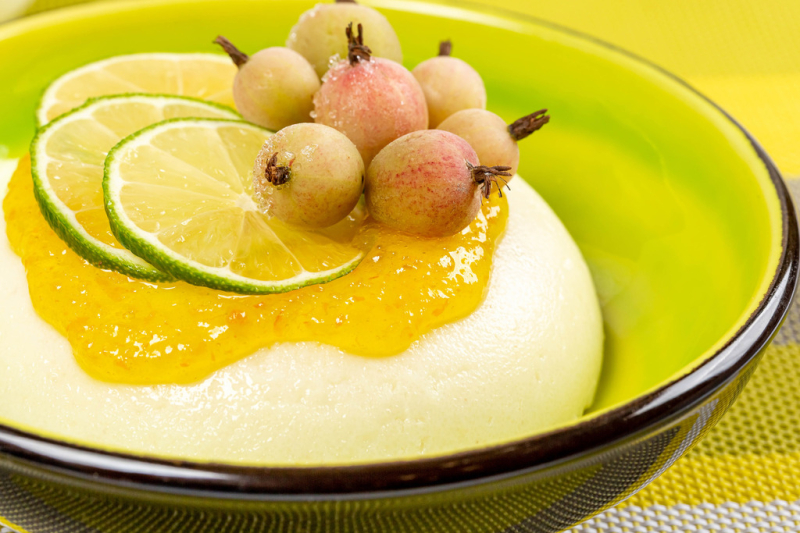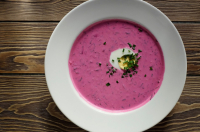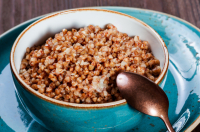World Porridge Day was devised by a Scotland-based charity in 2009, but has since spread to many countries around the globe. Though little-known in Russia, it is certainly a holiday that’s right up our alley.
After all, porridge – or kasha, as we prefer to call it – holds a special place in the national cuisine. While in English the borrowed word kasha refers to a specific buckwheat dish, the original Russian term describes a whole category of foods that are made with all kinds of grains, pseudocereals, and even legumes. The kasha is a versatile canvas for culinary experiments – it can be a breakfast, a lunch, a side dish, or even a dessert – but it is always a nutritious and filling comfort food.
Thus, it’s no surprise that it has a major cultural footprint, too: since its first mention in a 7th-century letopis, kasha has become ingrained in numerous idioms (of which “you can't spoil kasha with butter” is probably the most oft-used) and often features in Russian fairy tales and literature as a food eaten by the poor and the rich alike.
Unfortunately, the plain, overcooked, and watery gruel that plagued the lunchrooms of their childhood has soured many Russians’s feelings on kasha. So, if you’d like to explore the true richness and variety of this food – and, at the same time, help your Russian friends rediscover it for themselves, here are some of the best kasha types to start with and some unorthodox recipes that’ll help you go to the next level.
Oats
Probably the best-known porridge in the world (and the breakfast staple of hurried office workers everywhere), oatmeal is most commonly consumed with jams, nuts, and fruits as a morning meal that is somehow sweet yet still feels like a punishment.

A bowl of Japanese-style breakfast porridge. Credit: T.Tseng at flickr.com (CC BY 2.0 DEED)
For an all-new take on this familiar meal, look no further than dashi oats. Made with just oatmeal, any vegetables you might have on hand, and a dash of Japanese dashi or bonito seasoning (easily found at the nearest specialty shop), it’s a fairly easy yet impressive savory treat.
Find the recipe at Bon Appetit.
Buckwheat
Did you know that Russia produces almost a million tons (!) of buckwheat every year? That’s how much we love our grechka – the simple, nutritious pseudocereal that, in recent years, has been touted as a superfood. In flour form, you may also know it as the key ingredient of soba noodles!

Buckwheat kasha with meatballs. Credit: Elena Leya (@foodistika) via Unsplash
Though delicious with merely a dab of butter, buckwheat is also the main ingredient of grechotto, a new arrival on the St. Petersburg food scene. Yes, it’s exactly what you assume it is – the twisted offspring of Russian buckwheat and Italian risotto. But don’t knock it till you try it, we say.
Find the recipe at Grechka.
Pearl barley
This grain is very much one that grows on you; to a newbie, the slightly unyielding, slippery texture may seem quite strange. In Russian cuisine, it is most commonly cooked into a sweet, milky breakfast porridge akin to oatmeal – or used as filler in hearty soups.

A plate of mujaddara. Credit: PxHere (CC 1.0 DEED)
However, if you’ve still not found a way to make it work for you, why not try it in a mujaddara? Though this Levantine dish is traditionally made with rice and legumes, pearl barley makes for an excellent substitute. Seemingly simple, this mix of well-seasoned grains, fried onion, and a yogurt sauce is, in fact, very rich and delectable. Sprinkle with some mint for a culinary revelation!
Find the recipe at Almost Italian.
Semolina
For millions of Russians, semolina or manka (in reference to the Biblical manna) is associated with the quintessential children’s food of the same name. But sophisticated eaters will appreciate Guriev kasha, a decadent layered dessert that still, somehow, counts as a porridge and can be consumed warm or cold.

Semolina porridge. Credit: Marco Verch via ccnull.de (CC BY 2.0 DEED)
Named after a Russian Empire statesman who adored the dish, it was reportedly a favorite treat of Emperor Alexander III – and will make you feel like a royal, too. Guriev kasha is a common item on the menus of St. Petersburg’s restaurants, so give it a try when you see it.
Find the recipe at A Chef’s Help.




